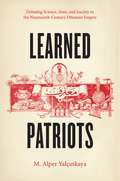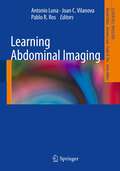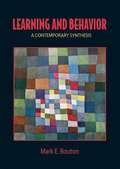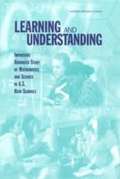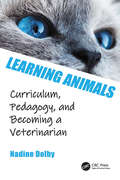- Table View
- List View
Leadership in a Time of Continuous Technological Change: Align, Strengthen, and Mobilize Your Team
by Bar SchwartzDigital technology is rapidly challenging the way we do business, interact with our communities, and learn about the world. Due to this, leading change in your digital organization now comes with unprecedented tools and platforms to make your teams the most effective they can be. Leadership in a Time of Continuous Technological Change has arrived at this pivotal moment and is your roadmap for this exciting, evolving journey. Author Bar Schwartz introduces a holistic framework for leaders to take the reins in the digital Wild West. Achieving your team’s goals in this new environment will require high creativity, an entrepreneurial mindset, and a diversity of perspectives to solve problems that have never before been tackled. Roles and responsibilities have morphed, and what made you successful in the past may no longer apply. Leadership in a Time of Continuous Technological Change is an unmatched resource fit for our new decade. Through analyzing detailed case studies, you will see how understanding your identity paves the way to achieving emancipation, capability, and autonomy. Ultimately, you will be empowered to lead with clarity. Your team has everything they need to excel. Discover how alignment and clarity can support you in launching your team to new heights.What You Will LearnExamine case studies of different situations that can arise within a team and go through lists of takeaway questions that leaders can start asking to gain quick winsAdopt an agile mindset while taking into consideration the existing culture in the organizationCommunicate and align on expectations and goals with your team in a time of organizational change Who This Book Is ForEmerging leaders who are dealing with change or leading change and seek to increase the level of alignment and clarity for their people and themselves
Leadership in the Open: A New Paradigm in Emergency Management
by Adam CroweAs a relatively young field, emergency management has already undergone considerable evolution and change. And now that Web 2.0 technologies and social media sites such as Facebook and Twitter have become inherently ingrained in all facets of our lives, emergency managers must once again re-evaluate best practices and standardized approaches.Provid
Leadership, Entrepreneurship and Sustainable Development Post COVID-19: 2022 Prague Institute for Qualification Enhancement (PRIZK) International Leadership Conference, June 24-25, 2022, Prague, Czech Republic (Springer Proceedings in Business and Economics)
by Wadim StrielkowskiThe proceedings volume provides an account of the pandemic-inspired policy changes in leadership, entrepreneurship, and sustainable development. The volume is a collection of papers presented at the 2022 International Leadership Conference hosted by the Prague Institute for Qualification Enhancement (PRIZK), Czech Republic. The focus of the conference was to outline positive changes for leadership in business and economics based on the lessons learned during the pandemic. The enclosed selection of papers describe the digital surge in business, economics, and education, as well as the development of frontier technologies caused by the COVID-19 lockdown periods. They also provide new insights into the concepts of leadership, entrepreneurship, and sustainable development post the COVID-19 pandemic. Finally, the papers define the new place and role of leadership within the context of global initiatives in sustainability such as the European Union's Green Deal and the United Nations' Sustainable Development Goals (SGDs).
Leading Edge Techniques in Forensic Trace Evidence Analysis: More New Trace Analysis Methods
by Robert D BlackledgeLeading Edge Techniques in Forensic Trace Evidence Analysis In-depth exploration of the latest methodologies, tools, and techniques for analyzing trace evidence In Leading Edge Techniques in Forensic Trace Evidence Analysis, distinguished and highly qualified contributors cover the significant advances in methodology and instruments that are now being used to analyze trace evidence in forensic laboratories, including new techniques used to determine authenticity of objects and artifacts (such as Combined Raman/LIBS Microscopy) and those used to analyze surface treatments (such as py-GC-PARCI-MS). The work also covers new evidence types, such as surface-modified fibers, microscopic particles, and shimmer, and provides detailed explanations and practical examples of all of the aforementioned topics. Among the topics covered are: Forensic analysis of shimmer particles in cosmetics samples, glitter and other flake pigments, and x-ray photoelectron spectroscopy Surface acoustic wave nebulization mass spectrometry, forensic applications of gas chromatography vacuum ultraviolet, and spectroscopy paired with mass spectrometry Density determination and separation via magneto-Archimedes levitation and elemental imaging of forensic traces with macro and micro XRF Characterization of human head hairs via proteomics and Raman and surface-enriched Raman scattering (SERS) for trace analysis With detailed explanations of modern methodologies, tools, techniques, and evidence types in trace evidence forensics, along with helpful guidance to put covered concepts into practice, Leading Edge Techniques in Forensic Trace Evidence Analysis serves as an invaluable hands-on reference for scientists in forensic laboratories worldwide.
Leading the Sustainable Organization: Development, Implementation and Assessment
by J. Lee Whittington Tim Galpin Greg BellThis book is the first to combine the much talked about topics of leadership and sustainability, and provides readers with a comprehensive overview and pragmatic approach to leading sustainable organizations. Chapters include discussions, case examples, steps, and useful tools centred on the components of the Leading the Sustainable Organization model. This model provides managers with a pragmatic, end-to-end framework for creating (in the case of new entities) or shifting (in the case of existing firms) their organizations’ workforces to a sustainability focus. Leading the Sustainable Organization is the perfect tool for executives and managers in small, medium, and large companies, and in all industries, to assist with the difficult and confusing topic of leading sustainability efforts. This book will be of great interest to students and academics who want to learn more about corporate sustainability.
Leaf Litter Critters
by Leslie BulionTake a poetic tour through the duff and get the dirt on the tiny, fascinating critters that live there.For all the kids who can't resist turning over a rock, science poetry maven Leslie Bulion presents nineteen lively ecological poems in a variety of verse forms about the "brown food web" and the creatures that live there—from bacteria and rove beetles to mushrooms and millipedes, and all of the other busy recyclers in between. Illustrator Robert Meganck adds to the fun with humorous and vivid, yet scientifically detailed, artwork. Science notes run throughout for added context, and thorough back matter includes a glossary, poetry notes, hands-on investigations, and other resources for cross-curricular learning.
Leafy Medicinal Herbs: Botany, Chemistry, Postharvest Technology and Uses
by Dawn C.P. Ambrose Annamalai Manickavasagan Ravindra NaikMedicinal herbs are rich in vitamins, minerals and antioxidants, and are able to synthesize secondary metabolites with disease preventive properties. It is due to these qualities that herbs have been used throughout history for flavouring and in food, medicine and perfumery preparations. They are also often considered to be safe alternatives to modern medicines because of their healing properties. Though interest in medicinal and aromatic crops is growing worldwide, there is still little focus on the area of leafy medicinal herbs. This book compiles the literature for 23 globally relevant leafy medicinal herbs. Beginning with a general overview and discussion of the importance of these plants, it then handles each herb by chapter. Chapters discuss the botany of the crop, including its history and origin, geographical distribution and morphology, before focusing on the chemical composition and phytochemical attributes. They then review postharvest technology aspects such as processing and value addition, before concluding with the general and pharmacological uses for each crop. A complete compilation of the subject, this book forms a vital resource for researchers, students, farmers and industrialists in the area of leafy medicinal herbs.
Lean Supply Chain Management in Fashion and Textile Industry (Textile Science and Clothing Technology)
by Rajkishore NayakThis book highlights the concepts of lean manufacturing that help to achieve the objectives of sustainability in a global competitive atmosphere. Lean can help to lower the manufacturing cost in the rising labour and material cost market. Lean is based on various fundamental concepts such as Kaizen, Kanban, Zidoka, 5S and Six Sigma, which aim at reducing process waste for efficiency and productivity that are discussed in this book. In addition, the technological changes such as introduction of Internet technologies and Industry 4.0 are taken care by the lean concepts, which are also addressed in this book.
Lean and Green Manufacturing: Towards Eco-Efficiency and Business Performance (Management and Industrial Engineering)
by Harish Kumar Kaliyan Mathiyazhagan K. E. K. Vimal Anbanandam Ramesh Vernika AgarwalThis book provides a stage-by-stage integration of lean and green manufacturing paradigms to achieve environmental and economic benefits. The book includes chapters on conceptual development for incorporating the lean and green paradigm, and methods, tools and techniques for developing and integrating lean manufacturing. Several case studies which demonstrate the benefits of integrating lean and green manufacturing techniques are also covered here. The contents of this book are expected to support researchers and practitioners in the implementation of integrated lean and green manufacturing technologies.
Lean for the Process Industries: Dealing with Complexity, Second Edition
by Peter L. KingCompared to its widespread implementation across almost all areas of production, Lean improvement efforts lag within the process industries. While many innovators have successfully applied Lean principles to these industries during the past three decades, most of those pioneering efforts were never recorded to guide the improvement efforts of others. Drawing on more than 40 years of application experience at one of the world’s largest chemical and materials manufacturers, coupled with 10 years in private practice, Peter King corrects this void by providing the first comprehensive resource written explicitly for change agents within the process industries. Focusing on areas where the improvement needs of the process industry differ from parts assembly manufacturing, Lean for the Process Industries: Dealing with Complexity, Second Edition: Covers each of the eight wastes commonly described in Lean literature, looking at how they manifest themselves in process operations. Explains how to adapt value stream mapping for process operations. Shows how to identify the root causes of bottlenecks, and how to manage them to optimize flow until they can be eliminated. Provides practical techniques to overcome the barriers which have prevented the application of Cellular Manufacturing to process operations. Discusses the role of business leadership in a Lean strategy, describing both enabling and counter-productive management behaviors Since the publication of the first edition of this book, Peter King has been busy consulting with food, beverage, gasoline additive, and nutraceutical companies -- these new experiences have broadened his perspectives on certain Lean processes and have given him a richer set of examples to discuss in this new edition. While Value Stream Mapping is a very powerful tool to understand flow, bottlenecks, and waste in an operation, the traditional format as presented in many other books does not describe all of the data required to fully understand process flow and its detractors. This new edition highlights the necessary additions with examples of why they are useful. Product wheel scheduling achieves production leveling in a far more comprehensive and effective way than traditional heijunka methods. This edition has a more thorough description of the wheel concept and design steps, and more examples from actual applications.
Lean for the Process Industries: Dealing with Complexity, Second Edition
by Peter L. KingCompared to its widespread implementation across almost all areas of production, Lean improvement efforts lag within the process industries. While many innovators have successfully applied Lean principles to these industries during the past three decades, most of those pioneering efforts were never recorded to guide the improvement efforts of others.Drawing on more than 40 years of application experience at one of the world’s largest chemical and materials manufacturers, coupled with 10 years in private practice, Peter King corrects this void by providing the first comprehensive resource written explicitly for change agents within the process industries. Focusing on areas where the improvement needs of the process industry differ from parts assembly manufacturing, Lean for the Process Industries: Dealing with Complexity, Second Edition: Covers each of the eight wastes commonly described in Lean literature, looking at how they manifest themselves in process operations. Explains how to adapt value stream mapping for process operations. Shows how to identify the root causes of bottlenecks, and how to manage them to optimize flow until they can be eliminated. Provides practical techniques to overcome the barriers which have prevented the application of Cellular Manufacturing to process operations. Discusses the role of business leadership in a Lean strategy, describing both enabling and counter-productive management behaviors Since the publication of the first edition of this book, Peter King has been busy consulting with food, beverage, gasoline additive, and nutraceutical companies -- these new experiences have broadened his perspectives on certain Lean processes and have given him a richer set of examples to discuss in this new edition.While Value Stream Mapping is a very powerful tool to understand flow, bottlenecks, and waste in an operation, the traditional format as presented in many other books does not describe all of the data required to fully understand process flow and its detractors. This new edition highlights the necessary additions with examples of why they are useful.Product wheel scheduling achieves production leveling in a far more comprehensive and effective way than traditional heijunka methods. This edition has a more thorough description of the wheel concept and design steps, and more examples from actual applications.
Leap of Faith: An Astronaut's Journey Into the Unknown
by Bruce Henderson Gordon Cooper&“An exciting insider&’s look at Projects Mercury, Gemini and Apollo . . . NASA&’s internal politics, disasters, glitches and close calls&” by a pioneering astronaut (Publishers Weekly). Gordon &“Gordo&” Cooper was one of the original Mercury Seven astronauts, pilot for Apollo X, head of flight crew operations for the United States&’ first orbiting space station, and the last American to venture into space alone. Stretching from the dawning days of NASA to the far reaches of the unknown, Cooper&’s distinguished career as a record-setting astronaut helped shape America&’s space program and blazed a trail for generations to come. In this astonishing memoir—written with #1 New York Times bestseller Bruce Henderson—Cooper crosses paths with such aviation luminaries as Amelia Earhart, Wiley Post, and German rocket scientist Wernher von Braun; he shares his early days at Edwards Air Force Base and the endeavors that became the basis for The Right Stuff; he takes us inside NASA with candid accounts of his defeats and accomplishments; he reflects on the triumphs and tragedies of his heroic colleagues; and he finally reveals the reasons behind his belief in extraterrestrial intelligence, including the US military&’s long-standing UFO cover-ups. Buckle yourself in for a breathtaking ride because in Leap of Faith, Gordon Cooper takes readers to places they&’ve never been before.
Leap to Wholeness: How the World Is Programmed to Help Us Grow, Heal, and Adapt
by Sky Nelson-IsaacsAn investigation into the physics of light and our journey toward healing, connection, and wholeness.The reductionism and materialism of our modern world make it easy to imagine everything can be cleanly broken down into smaller and smaller parts. Yet the straightforward example of light in a hologram, which can't be reduced to its parts, points to an underlying interconnected reality--a wholeness. Physicist Sky Nelson-Isaacs uses numerous familiar examples--rainbows, music, photography--to illustrate a fundamental wholeness found in nature.Just as light is filtered as it passes through a filmstrip, Nelson-Isaacs points out that our human experience is filtered through thoughts and feelings. This view provides an explanation as to why, in our daily lived reality, we can feel so broken and not-whole. Nelson-Isaacs weaves together cutting-edge ideas into the nature of space and time and original research, with a compelling message of urgency. The filters we use to make choices everyday hide important information from us, leading us away from experiences of flow. Through synchronicities, we are led to life lessons tailored to our readiness for change. Nelson-Isaacs reconsiders the view of time itself, suggesting that we live not just in this moment but on a timeline of history, part of a wave moving from our past into our future. Every choice we make shifts what is available to us. Can we learn to rethink our lives and reality to remove our filters and realize the wholeness that we have inherent in ourselves and in our world? Yes, says Nelson-Isaacs--and once we do that, we can use the multiverse of possibilities to make choices that help us heal and grow into a greater sense of ourselves.
Leaping Ahead
by Fabien Génin Russell Tuttle Marco Gamba Judith MastersLeaping Ahead: Advances in Prosimian Biology presents a summary of the state of prosimian biology as we move into the second decade of the 21st century. The book covers a wide range of topics, from assessments of diversity and evolutionary scenarios, through ecophysiology, cognition, behavioral and sensory ecology, to the conservation and survival prospects of this extraordinary and diverse group of mammals. The collection was inspired by an international conference in Ithala, KwaZulu-Natal, South Africa in 2007, where prosimian biologists gathered from Canada, Finland, France, Germany, India, Italy, Japan, Madagascar, South Africa, Tanzania, the United Kingdom, and the United States of America. The meeting reverberated with the passion prosimian researchers feel for their study subjects and with their deep concern for the future of prosimians in the face of ongoing habitat destruction and the burgeoning threat of bushmeat hunting. Chapters for this volume were contributed by researchers from across the globe; they attest to the diversity, vibrancy and rapid growth of prosimian biology, and to the intellectual advances that have revolutionized this field in recent years. Since its earliest beginnings, prosimian research and its resultant literature have had a strong francophone component, and researchers in many prosimian habitat countries are more comfortable reading and writing in French rather than English. French summaries of all chapters have been included. The volume is targeted at researchers, both those entering the field and established scientists, who have an interest in the biology of primates and small mammals. It is also aimed at conservation biologists seeking a deeper understanding of the faunas and conservation developments in Africa, Madagascar and Southeast Asia, and anyone who has an interest in discovering the true diversity of our order, the Primates.
Leaping Electrons!
by Liz HuyckElectrons are extremely tiny charged particles that we can push around with magnets. This provides us with electricity.
Learn Every Day About Our Green Earth: 100 Best Ideas from Teachers
by Kathy CharnerLearning about OUR GREEN EARTH has never been so much fun! Taking care of our planet has never been more important, and this book will teach even the youngest children about environmental responsibility. Learn Every Day About Our Green Earth makes it easy for teachers to incorporate discussions about caring for the Earth into any curriculum with activities that promote responsible behaviors and are fun and enjoyable. In this book, activities like "Recycling Adds Up" and "Block Compost" teach children the importance of reusing and recycling, while "Thank a Tree" and "Worms Are Good Guys" teach them to respect and love nature. Global awareness is everyone's responsibility, and the activities in Learn Every Day About Our Green Earth help teachers pass along this important knowledge to the next generation.Each activity features: * Learning objectives * Vocabulary * Related children's books * Materials * Preparation (if necessary) * What to do * An assessment component Each of the books in the Learn Every Day series offers teachers 100 classroom-tested activities that make learning fun and engaging for young children!
Learn Physics with Functional Programming: A Hands-on Guide to Exploring Physics with Haskell
by Scott N. WalckDeepen your understanding of physics by learning to use the Haskell functional programming language.Learn Physics with Functional Programming is your key to unlocking the mysteries of theoretical physics by coding the underlying math in Haskell.You&’ll use Haskell&’s type system to check that your code makes sense as you deepen your understanding of Newtonian mechanics and electromagnetic theory, including how to describe and calculate electric and magnetic fields.As you work your way through the book&’s numerous examples and exercises, you&’ll learn how to:Encode vectors, derivatives, integrals, scalar fields, vector fields, and differential equationsExpress fundamental physical principles using the logic of Haskell&’s type system to clarify Newton&’s second law, Coulomb&’s law, the Biot-Savart law, and the Maxwell equationsUse higher-order functions to express numerical integration and approximation methods, such as the Euler method and the finite-difference time-domain (FDTD) methodCreate graphs, models, and animations of physical scenarios like colliding billiard balls, waves in a guitar string, and a proton in a magnetic fieldWhether you&’re using this book as a core textbook for a computational physics course or for self-study, Learn Physics with Functional Programming will teach you how to use the power of functional programming to explore the beautiful ideas of theoretical physics.
Learnability and Cognition, new edition: The Acquisition of Argument Structure (Learning, Development, and Conceptual Change)
by Steven PinkerA classic book about language acquisition and conceptual structure, with a new preface by the author, "The Secret Life of Verbs."Before Steven Pinker wrote bestsellers on language and human nature, he wrote several technical monographs on language acquisition that have become classics in cognitive science. Learnability and Cognition, first published in 1989, brought together two big topics: how do children learn their mother tongue, and how does the mind represent basic categories of meaning such as space, time, causality, agency, and goals? The stage for this synthesis was set by the fact that when children learn a language, they come to make surprisingly subtle distinctions: pour water into the glass and fill the glass with water sound natural, but pour the glass with water and fill water into the glass sound odd. How can this happen, given that children are not reliably corrected for uttering odd sentences, and they don't just parrot back the correct ones they hear from their parents? Pinker resolves this paradox with a theory of how children acquire the meaning and uses of verbs, and explores that theory's implications for language, thought, and the relationship between them.As Pinker writes in a new preface, "The Secret Life of Verbs," the phenomena and ideas he explored in this book inspired his 2007 bestseller The Stuff of Thought: Language as a Window into Human Nature. These technical discussions, he notes, provide insight not just into language acquisition but into literary metaphor, scientific understanding, political discourse, and even the conceptions of sexuality that go into obscenity.
Learnability and Cognition: The Acquisition of Argument Structure (new edition)
by Steven PinkerBefore Steven Pinker wrote bestsellers on language and human nature, he wrote severaltechnical monographs on language acquisition that have become classics in cognitive science. Learnability and Cognition, first published in 1989, brought together two bigtopics: how do children learn their mother tongue, and how does the mind represent basic categoriesof meaning such as space, time, causality, agency, and goals? The stage for this synthesis was setby the fact that when children learn a language, they come to make surprisingly subtle distinctions:pour water into the glass and fill the glass with water soundnatural, but pour the glass with water and fill water into theglass sound odd. How can this happen, given that children are not reliably corrected foruttering odd sentences, and they don't just parrot back the correct ones they hear from theirparents? Pinker resolves this paradox with a theory of how children acquire the meaning and uses ofverbs, and explores that theory's implications for language, thought, and the relationship betweenthem. As Pinker writes in a new preface, "The Secret Life of Verbs," thephenomena and ideas he explored in this book inspired his 2007 bestseller The Stuff ofThought: Language as a Window into Human Nature. These technical discussions, he notes,provide insight not just into language acquisition but into literary metaphor, scientificunderstanding, political discourse, and even the conceptions of sexuality that go intoobscenity.
Learned Patriots: Debating Science, State, and Society in the Nineteenth-Century Ottoman Empire
by M. Alper YalcinkayaThe nineteenth century was, for many societies, a period of coming to grips with the growing, and seemingly unstoppable, domination of the world by the "Great Powers” of Europe. The Ottoman Empire was no exception: Ottomans from all walks of life--elite and non-elite, Muslim and non-Muslim--debated the reasons for what they considered to be the Ottoman decline and European ascendance. One of the most popular explanations was deceptively simple: science. If the Ottomans would adopt the new sciences of the Europeans, it was frequently argued, the glory days of the empire could be revived. In Learned Patriots, M. Alper Yalçinkaya examines what it meant for nineteenth-century Ottoman elites themselves to have a debate about science. Yalçinkaya finds that for anxious nineteenth-century Ottoman politicians, intellectuals, and litterateurs, the chief question was not about the meaning, merits, or dangers of science. Rather, what mattered were the qualities of the new "men of science. ” Would young, ambitious men with scientific education be loyal to the state? Were they "proper” members of the community? Science, Yalçinkaya shows, became a topic that could hardly be discussed without reference to identity and morality. Approaching science in culture, Learned Patriots contributes to the growing literature on how science travels, representations and public perception of science, science and religion, and science and morality. Additionally, it will appeal to students of the intellectual history of the Middle East and Turkish politics.
Learning Abdominal Imaging
by Joan C. Vilanova Antonio Luna Pablo R. RosThis book is an ideal introduction to the use of radiology in imaging diseases of the liver, gallbladder and biliary system, pancreas, spleen, and gastrointestinal tract. Each of the ten chapters is devoted to a particular organ and contains ten illustrated case reports drawn from clinical practice. Common clinical situations and indications for imaging are reviewed, and clear descriptions are provided of the various imaging techniques that will assist in resolving diagnostic and therapeutic dilemmas. This book is recommended for medical students, residents, and inexperienced abdominal radiologists.
Learning About Matter (Science 2012 Leveled Reader #Grade 5 On-level)
by Scott ForesmanScience 2012 Leveled Reader Grade 5 On-level: Learning About Matter
Learning And Behavior: A Contemporary Synthesis
by Mark E. BoutonProviding a strong background in modern learning and behavior theory, this book reflects the importance of the study of animal learning in psychology. Topics covered include learning and adaptation, modern conditioning theories, memory retrieval, instrumental learning, avoidance learning and learned helplessness.
Learning And Understanding: Improving Advanced Study Of Mathematics And Science In U.s. High Schools
by Committee on Programs for Advanced Study of Mathematics Science in American High SchoolsThis book takes a fresh look at programs for advanced studies for high school students in the United States, with a particular focus on the Advanced Placement and the International Baccalaureate programs, and asks how advanced studies can be significantly improved in general. It also examines two of the core issues surrounding these programs: they can have a profound impact on other components of the education system and participation in the programs has become key to admission at selective institutions of higher education.By looking at what could enhance the quality of high school advanced study programs as well as what precedes and comes after these programs, this report provides teachers, parents, curriculum developers, administrators, college science and mathematics faculty, and the educational research community with a detailed assessment that can be used to guide change within advanced study programs.
Learning Animals: Curriculum, Pedagogy and Becoming a Veterinarian
by Nadine DolbyWe are surrounded by thousands of animals, alive and dead. They are an intimate and ever-present part of our human lives. As a society, we privilege veterinarians as experts on these animals: they are our educators and teachers in what they say, what they do, and the decisions that they make. Yet, within the field of education, there is little research on the curriculum, pedagogy, and experiences of veterinary school and students. What do veterinarians learn in veterinary school? How do their experiences during those four years shape their perceptions of animals? How do the structures, curriculum, and pedagogy of veterinary college create and influence these experiences? Learning Animals opens up this conversation through an exploration of the complicated, fascinating and often painful stories of a cohort of veterinary students as they make their four-year journey from matriculation through graduation. The book examines how the experiences of veterinary students shape how humans relate to animals, from public policy and decision-making about the environment and animals slaughtered for food, to the most personal decisions about euthanizing companion animals. The first full-length, critical, qualitative study of the perspectives of our primary teachers about animals, this will be a thought-provoking read for those in the fields of both educational research and veterinary education.


